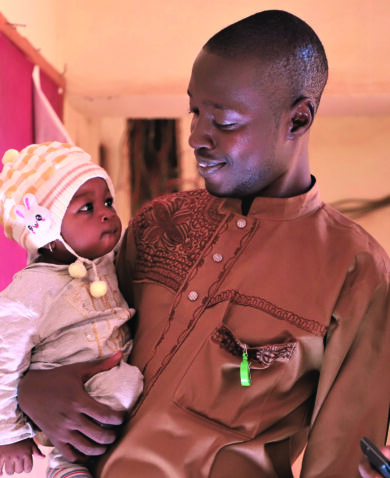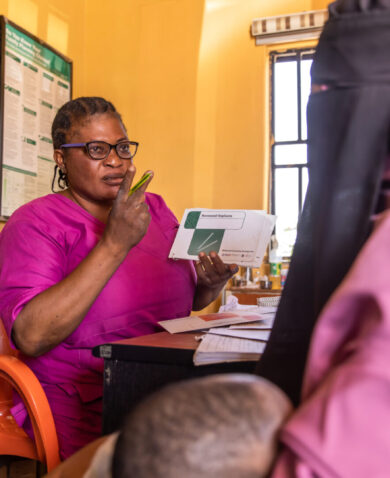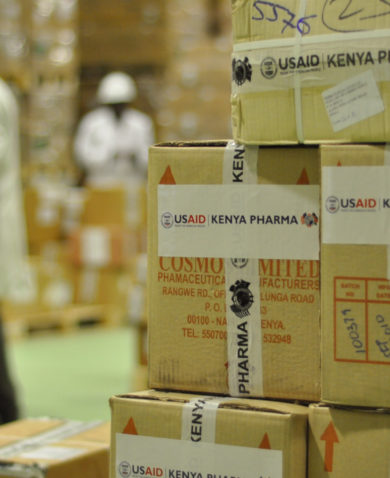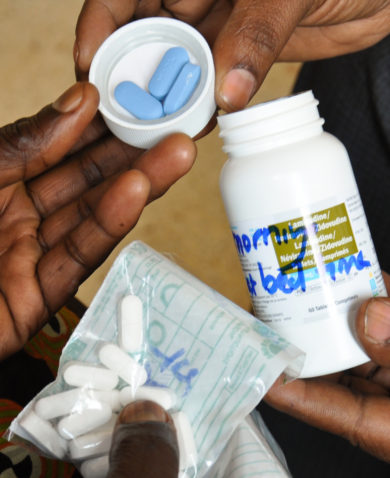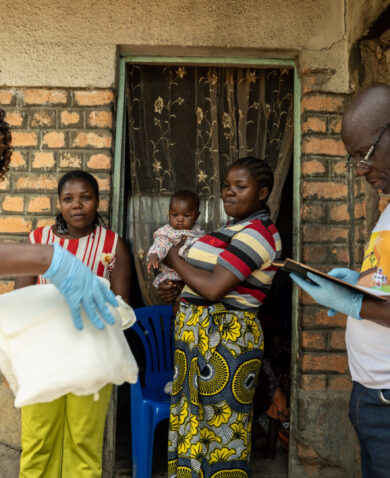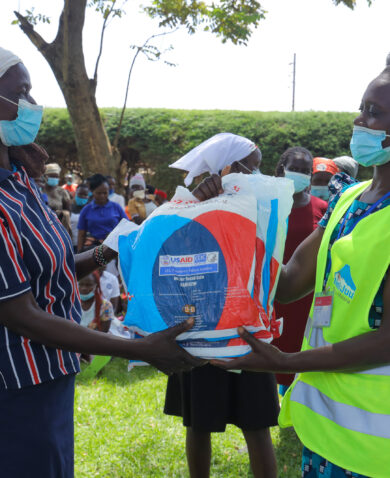
We Have the Tools to Reach “Zero Malaria” in Pregnancy
April 24, 2019 | 4 Minute ReadMalaria remains a global threat and pregnant women are especially vulnerable. There are measures we must take to ensure women no longer have to die in childbirth or fear the loss of another pregnancy because they are infected.
Malaria is a silent killer and a health risk for many around the world. It causes about half a million deaths each year, with over 90 percent of those occurring in sub-Saharan Africa alone. As the third most common cause of death in women of reproductive age in Africa, malaria poses increased risk for pregnant women. Malaria can threaten the viability of a pregnancy, causing serious complications for mother and child: spontaneous abortion, premature delivery and stillbirth, fetal growth restriction, and both maternal and fetal anemia. If the mother carries the pregnancy to term, low birth weight and even neonatal death are likely outcomes. Yet, malaria is one of the most preventable causes of adverse birth outcomes. Despite these known high risks, prevention methods are not widely used, and diagnosis and treatment remain low throughout Africa. Reaching pregnant women, mothers, and those close to them and ensuring that these measures are introduced and properly used is key to preventing and treating malaria in pregnancy (MiP). The international development community can play an integral role in ensuring that ministries of health and their national malaria control programs (NMCPs) adopt global best practices and guidance developed and endorsed by entities like the World Health Organization (WHO) and Roll Back Malaria.
Tools for Prevention
The WHO’s guidance on MiP prevention and treatment is, in many instances, cost-effective and user-friendly. For preventing malaria, WHO recommends the use of indoor residual spraying and long-lasting insecticide-treated nets (LLINs), particularly for women and young children. NMCPs work closely with donors and implementing organizations to ensure use of both prevention methods. The USAID Global Health Supply Chain Program – Procurement and Supply Management (GHSC-PSM) project plays a significant role in working alongside ministries of health and NMCPs to manage, procure, and distribute life-saving treatments to remote areas and high malaria transmission zones, reaching the mothers who are hardest to reach. Together with GHSC-PSM and the NMCP, the USAID Global Health Supply Chain – Technical Assistance Francophone Task Order is conducting a mass bed net distribution campaign in the Democratic Republic of Congo. In addition to distributing more than 3 million LLINs, the project has organized communications campaigns and community engagement and mobilization activities to increase families’ awareness of malaria prevention through proper use and maintenance of LLINs. The WHO also recommends the use of intermittent preventive treatment in pregnancy with sulfadoxine-pyrimethamine (IPTp-SP) as part of antenatal care services in areas with moderate to high malaria transmission. Improving IPTp-SP coverage as part of antenatal care is critical to maternal and child survival. Starting IPTp-SP early and continuing throughout pregnancy via antenatal care visits, health-care providers and women can ensure a healthy and viable pregnancy.
Tools for Diagnosis and Treatment
Prevention is only a part of this equation. As simple as it seems to prevent malaria, effective prevention methods aren’t always employed. In these cases, WHO offers guidance on best practices for diagnosing, treating, and tracking the infection. At antenatal care visits, expectant mothers can be tested for malaria and, if positive, receive regular treatment to ensure they remain healthy throughout their pregnancies. Testing, treating, and tracking malaria cases isn’t that easy. One in four women who live in high transmission areas have malaria at the time they give birth. In malaria endemic countries, maternal deaths related to malaria infection are likely to go unreported. This is due to women in malaria transmission zones having reduced immune response that make malaria infections less apparent and harder to diagnose. To further complicate the matter, malaria in pregnant women presents itself as any other febrile illness. Pregnant women are, however, three times more likely to develop severe disease due to malaria infections than non-pregnant women. Given these challenges, quality laboratory tests are important in malaria diagnosis. The WHO recommends the use of parasitological diagnosis in suspected malaria cases, which isn’t always possible due to resources and the capacity, management, and responsibility of health-care providers. Health workers need to have the tools to accurately and efficiently diagnose the disease. Equipping health-care facilities with diagnostic tools, like immunochromatographic rapid diagnostic tests, will result in accurate diagnosis and — hopefully — treatment. Ministries of health and other stakeholders need to ensure that health-care workers are properly trained and understand malaria diagnosis, referral, and proper treatment for pregnant women and women of reproductive age.
Tools for Reporting
When it comes to malaria in pregnancy, accurate diagnosis can lead to more accurate reporting. Reporting helps ministries of health and NMCPs develop informed and effective strategies for combatting the disease. If mechanisms aren’t in place to report cases (and health workers aren’t trained to report), treatment and prevention can’t be targeted to the areas that are most in need. When treatment and prevention aren’t targeted and commodities aren’t delivered, pregnant women don’t receive the lifesaving therapy they need for themselves and their children. The USAID HRH2030 program’s Capacity Building for Malaria activity works to strengthen the institutional capacity of NMCPs throughout West Africa so they can effectively use data to implement high-quality malaria control programs based on WHO guidance.
Malaria doesn’t have to be a silent killer. The international development community, guided by the WHO with support from donor agencies, has recognized the importance of addressing the seriousness of malaria in pregnancy and working to end malaria altogether. By doing something as simple as sleeping under a mosquito net and adopting other preventive methods, like indoor residual spraying and IPTp-SP, malaria can be prevented before, during, and after pregnancy. With the help of effective diagnosis, new treatment regimens, regular reporting, and better case management through antenatal care visits, women no longer have to die in childbirth or fear the loss of another pregnancy because they have malaria. There is an end, and it’s clearly in our sight.






